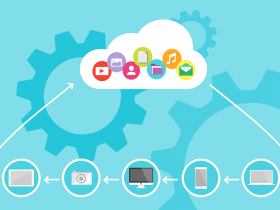There are many challenges associated with implementing cloud computing in your organization. Some of these include cost, data security, privacy, and network configuration. However, you can overcome these challenges with proper planning and research.
In this article, we’ll discuss some of the most common issues and discuss solutions on implementing cloud computing.
Data security
One of the most critical challenges when implementing cloud computing is securing personal data. Organizations increasingly depend on cloud applications and infrastructure for business operations, and a breach in cloud security can expose sensitive data to attackers. A breach can also give hackers access to a company’s online account and give them complete control. Organizations implementing cloud computing solutions often lack the necessary tools and resources to protect data.
For example, phishing attacks and account compromise can result in data breaches and service disruptions. A breach could also result from poor password security. Insiders can also compromise accounts. These insiders can cause system outages and data breaches, so it is important to create policies that protect against insider threats.
Privacy
While cloud services can offer a number of benefits to a business, companies should also consider the legal implications of storing sensitive data in the cloud. These days, new data protection regulations make companies and organizations liable for the privacy and security of their customers’ data. Data breaches can also result in legal action against the data collectors.
Because cloud infrastructure is often distributed across multiple geographical locations, it can be difficult to ensure compliance. Additionally, some data protection regulations restrict the transfer of personal information across borders. This can create issues when cloud service providers are forced to hand over data stored in the cloud.
Cost
Cloud computing is a powerful tool for organizations. It helps them meet their business needs while reducing the overall cost of maintaining the technology. It also enables disaster recovery and does not require large upfront capital costs. However, organizations must be aware of how cloud computing costs are calculated. There are two main categories of costs: direct and indirect. The former includes hardware and software costs while the latter includes losses in productivity and reputation. Indirect costs are more difficult to quantify. However, there are a few common models that can help organizations manage their cloud costs.
The cost of cloud computing depends on the service that you choose. For example, using AWS RDS costs 30 percent more than using a self-managed database. However, AWS RDS comes with auto-failover and automatic backups. Depending on the features you need, cloud computing can be a great option for your business.
Network configuration
The configuration of networks is one of the key issues on implementing cloud computing. Cloud computing services rely heavily on networks. These networks will be subjected to more demands as cloud applications become more interactive and bandwidth hungry. In addition, cloud providers will have to ensure acceptable performance, reliability, and secure communications. Fortunately, most cloud configuration issues can be avoided by planning ahead. Here are a few ways to make your cloud computing experience run smoothly.
Network configuration is the most difficult challenge on implementing cloud computing. Companies have to ensure that their cloud applications are easily migrated between clouds. Because cloud applications are locked in place for a specific period of time, moving them from one cloud to another is a complex process. Another challenge is that cloud users are unable to access the cloud from every location. While this problem can be overcome with a cloud provider’s help, it is a difficult process.
Governance
When it comes to cloud computing, there are many challenges associated with governance. Organizations need to be able to control costs and the security of their data. However, a single sweeping policy change may not address all of these issues. This is why introducing a governance framework in incremental steps is recommended. For example, organizations in industries that are highly regulated should focus on security and compliance first, before moving on to cost management.
Another challenge associated with cloud computing is the lack of control over employees. A lack of control creates problems in designing and deploying applications. Additionally, lack of control over employees poses a risk of a breach in security. By adopting a cloud governance model, organizations can maintain control of their data while still allowing their employees to do their jobs. This can reduce the operational cost of a cloud infrastructure, while ensuring the privacy and security of sensitive data.







Leave a Reply